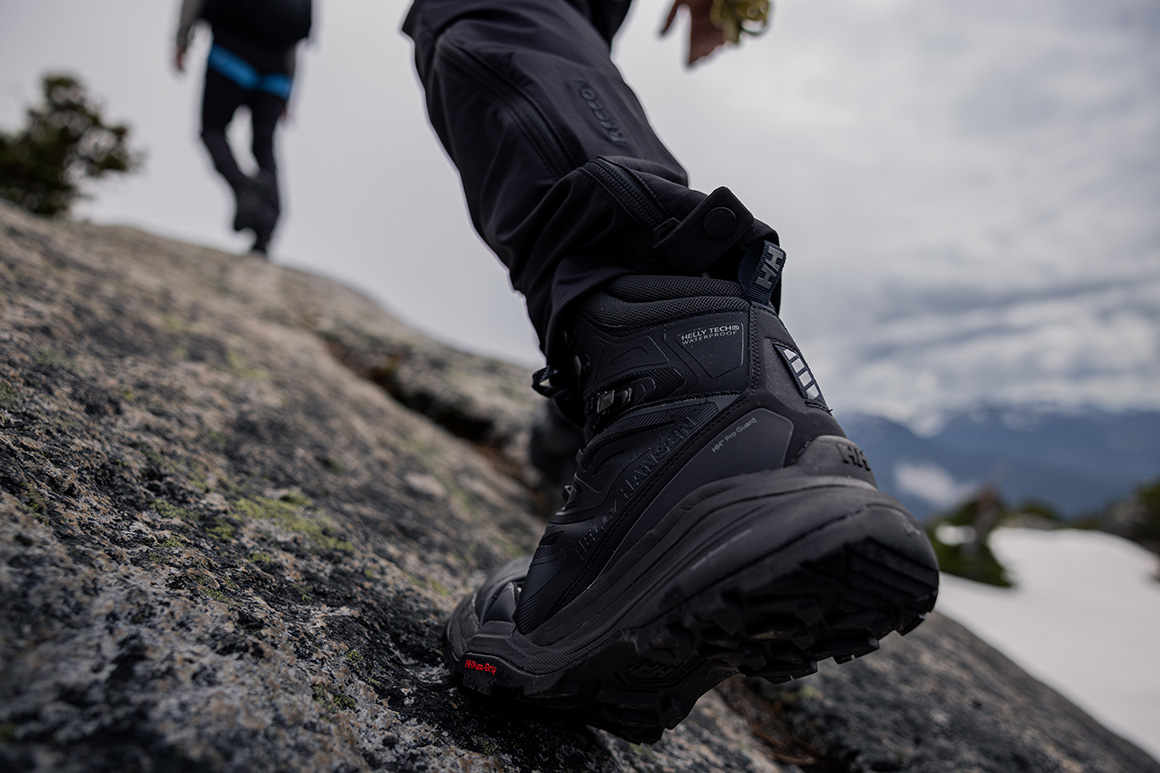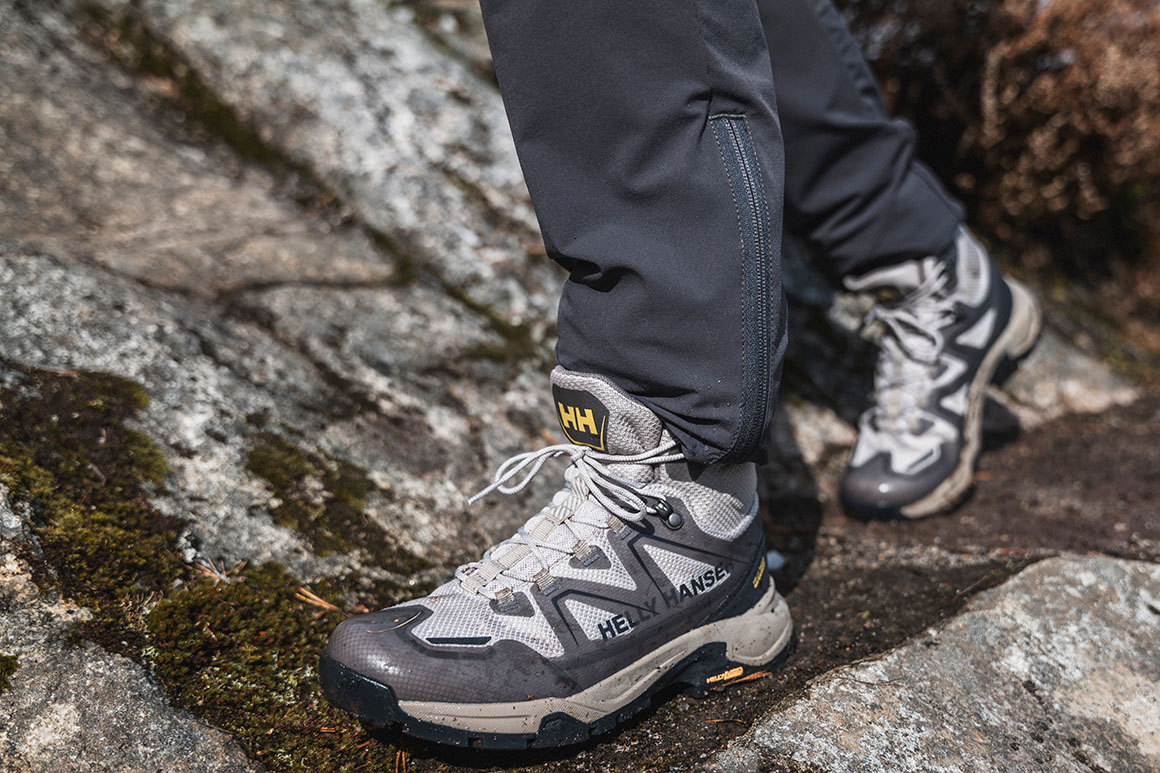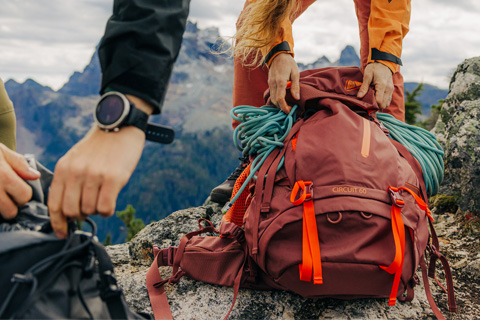How to break in hiking boots
January 09, 2025 4 min read
Breaking in your hiking boots is a crucial step to ensuring comfort on the trail.
Putting on a brand-new pair of hiking boots for your outdoor adventures sounds like an exciting idea—until you’re halfway through a trail with tender feet and painful hotspots.
This guide will explain why breaking in your boots is important, share effective techniques to get your boots trail-ready, and help you know when they’re fully broken in.
Why breaking in hiking boots matters
Hiking boots are designed to be sturdy, durable, and protective—qualities that make them much less pliable straight out of the box. Without breaking them in, the stiff materials of your boots can chafe and rub against your feet, causing discomfort, blisters, or even injuries on long hikes.
Breaking in your hiking boots moulds them to your feet over time, enabling customized support and maximum comfort. Think of it as preparing your boots for the exciting adventures ahead, one step (and mile) at a time.

8 ways to break in your hiking boots
Rushing into a rigorous hike with brand-new boots can be a mistake, but don’t worry—breaking in your boots is a simple process when you follow these steps:
1. Wear them around the house
Start by wearing your hiking boots indoors. Lace them up as you would for a hike and wear them for short periods. Walk around on different surfaces, such as carpet and hardwood, to get used to their feel. This allows your feet to start forming to the boots without the pressure of uneven terrain.
2. Pair them with the right socks
Use the same socks you plan to wear during your hikes—ideally moisture-wicking, cushioned hiking socks. This will give you a realistic idea of how your boots will fit and add an extra layer of protection during the break-in process.
3. Practice short walks
Once your boots feel manageable indoors, take them out for short walks around your neighborhood or on flat trails. Aim for low-stakes outings that gradually introduce the boots to outdoor conditions.
4. Gradually increase the distance
With each walk, increase the distance and incorporate some varied terrain, such as gravel paths, hills, or forest trails. This will help ease the boots into the type of environment they’ll encounter on a proper hike.
5. Simulate hiking conditions
Add a loaded backpack to your walks to replicate the weight distribution you’ll experience during a hike. This step is especially important if you’re planning multi-day backpacking trips.
6. Address hotspots early
Pay close attention to any areas where you feel discomfort or rubbing, known as hotspots. Use moleskin or blister prevention patches to protect these areas and adjust lacing techniques to improve fit.
7. Condition the leather (if necessary)
For leather hiking boots, using a leather conditioner can soften the material and help it conform better to your feet. Just be sure to use products recommended by the manufacturer so you don’t compromise the boots’ waterproofing or durability.
8. Be patient
The break-in process isn’t something you can rush—give your boots the time they need to adapt to your feet. Doing so will pay off in the form of comfort and reliability during your hikes.

How long does it take to break in hiking boots?
The time it takes to break in hiking boots can vary depending on the material, design, and individual feet. Most boots require anywhere from 1 to 3 weeks of regular wear to properly break in.
For most synthetic boots, you may only need a few walks to feel fully comfortable, while heavier leather boots require a longer process. On average, plan to walk for 15 to 20 miles in your boots before attempting a serious hike.
How to break in hiking boots fast
You might be tempted to speed up the break-in process, but rushing can lead to issues like blisters or quick wear and tear. Here are some tips to gently expedite the process without putting your boots—or your feet—at risk:
Wear them daily during activities like walking the dog or running errands.
Use boot stretchers to gently adjust tight areas.
Heat mold certain boots if the manufacturer recommends it.
Top tip: avoid overnight “internet hacks,” like soaking your boots in water or baking them, as these can damage the boots’ material or structure.
How to know when hiking boots are broken in
You’ll know your hiking boots are broken in when they pass the following tests:
No more hotspots or blisters: you can wear the boots for extended periods without any discomfort or potential blisters.
Enhanced flexibility: the boots feel noticeably more pliable and move naturally with your feet.
Perfect fit: your boots now fit snugly without being tight, and they don’t rub against your heels, toes, or ankles.
Consistent comfort on the trail: after progressively longer walks or hikes, your feet feel supported and pain-free.
When your boots are broken in, they’ll feel like an extension of your feet—and you’ll be ready to tackle trails with full confidence.
Hit the trail with confidence
Breaking in your hiking boots is all about preparation and patience. By following these steps, you’ll ensure your boots are ready to support your adventures instead of slowing you down. The time you invest now will save your feet from discomfort when it matters most—out on the trail. Now that you’re equipped with the know-how, lace up your hiking boots and start the break-in process as soon as you can. You never know when adventure will call!

January 30, 2025 2 min read
How to wash a backpack
Learn how to wash your backpack without a washing machine in four easy steps.

October 18, 2024 3 min read
How to wash a down jacket: 5 easy steps
Down jackets need to be cared for and cleaned properly. Learn how to wash your down jacket at home to keep it lofty, warm, and performing at its best!

August 20, 2024 2 min read
How to wash fleece: a complete guide
Here's everything you need to know about how to wash fleece, plus tips on how to avoid piling, and more.

April 05, 2024 3 min read
How to Wash Base Layers and Activewear: 4 Easy Steps
Follow these tips to wash your base layers and maximize their performance for years to come.